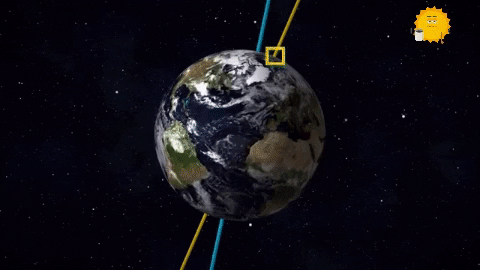Like most planets in our solar system, the Earth has its own magnetic field. Thanks to its largely molten iron core, our planet is, in fact, a bit like a bar magnet. It has a north and south magnetic pole, separate from the geographic poles, with a field connecting the two. This field protects our planet from radiation and is responsible for creating the northern and southern lights – spectacular events that are only visible near the magnetic poles.
Our planetary magnetic field has many advantages. For over 2,000 years, travellers have been able to use it to navigate across the globe. Some animals even seem to be able to find their way thanks to the magnetic field. But, more importantly than that, our geomagnetic field helps protect all life on Earth.
Earth’s magnetic field extends hundreds of thousands of kilometres out from the centre of our planet – stretching right out into interplanetary space, forming what scientists call a “magnetosphere”. This magnetosphere helps to deflect solar radiation and cosmic rays, preventing the destruction of our atmosphere. This protective magnetic bubble isn’t perfect though, and some solar matter and energy can transfer into our magnetosphere.
Since Earth’s magnetic field is created by its moving, molten iron core, its poles aren’t stationary and they wander independently of one another. In fact, since its first formal discovery in 1831, the north magnetic pole has travelled over 2,000km from the Boothia Peninsula in the far north of Canada to high in the Arctic Sea. This wandering has generally been quite slow, around 9km a year, allowing scientists to easily keep track of its position. But since the turn of the century, this speed has increased to 50km a year. The south magnetic pole is also moving, though at a much slower rate (10-15km a year).
This rapid wandering of the north magnetic pole has caused some problems for scientists and navigators alike. Computer models of where the north magnetic pole might be in the future have become seriously outdated, making accurate compass-based navigation difficult. Although GPS does work, it can sometimes be unreliable in the polar regions. In fact, the pole is moving so quickly that scientists responsible for mapping the Earth’s magnetic field were recently forced to update their model much earlier than expected.
In the meantime, scientists are working to understand why the magnetic field is changing so dramatically. Geomagnetic pulses, like the one that happened in 2016, might be traced back to ‘hydromagnetic’ waves arising from deep in the core. And the fast motion of the north magnetic pole could be linked to a high-speed jet of liquid iron beneath Canada.
The jet seems to be smearing out and weakening the magnetic field beneath Canada. Which means that Canada is essentially losing a magnetic tug-of-war with Siberia.
The location of the north magnetic pole appears to be governed by two large-scale patches of the magnetic field, one beneath Canada and one beneath Siberia. The Siberian patch is winning the competition. Which means that the world’s geomagnetists will have a lot to keep them busy for the foreseeable future.
